Ad
Articles
The Ultimate TV Buying Guide: Transform Your Entertainment Experience
Introduction:
Welcome to the ultimate guide to buying a TV! In today's digital age, the television has evolved beyond being just a device for watching shows and movies. It has become a centrepiece of our homes, a portal to endless entertainment possibilities, and a window to the world. With a vast array of options available in the market, choosing the right TV can be a daunting task. That's where this comprehensive buying guide comes in to assist you in navigating through the myriad of choices and making an informed decision.
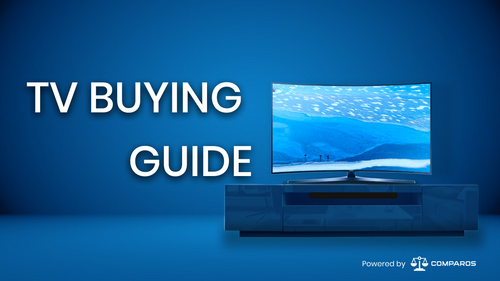
In this extensive guide, we'll delve into every aspect of purchasing a television, from understanding the different types of TVs to deciphering complex technical specifications. Whether you're a tech enthusiast seeking the latest innovations or a casual viewer looking for a reliable and budget-friendly option, we've got you covered.
So, whether you're planning to upgrade your existing TV or purchasing one for the first time, buckle up as we embark on a journey to explore the world of TVs and find the perfect one to transform your living space into an immersive entertainment hub. Let's dive in!
Key Topics Covered:
- Types of TV
- Screen Size
- Resolution
- Display Technology
- Smart Features
- HDR Support
- Refresh Rate and Motion Handling
- Audio Quality
- Connectivity
- Gaming Features
- Energy Efficiency
- Brand Reputation
- Budget Considerations
Types Of TV Available in Market:
Let's delve deeper into each type of TV to understand their features, benefits, and unique selling points.
- LED TVs: LED TVs, short for Light Emitting Diode TVs, have become a staple in households worldwide due to their affordability and versatility. These TVs utilize LED backlighting to illuminate the screen, resulting in bright and energy-efficient displays. LED TVs come in a variety of sizes and resolutions, catering to a wide range of budgets and preferences. While they may not offer the same level of picture quality as OLEDs, LED TVs excel in areas such as brightness and longevity, making them an excellent choice for everyday viewing and gaming.
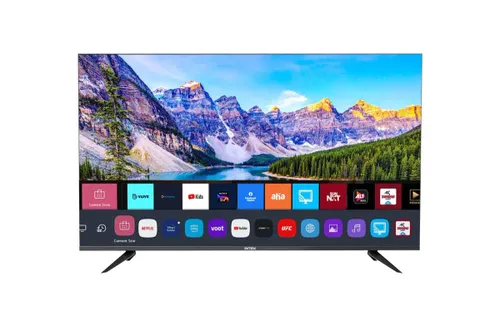
- OLED TVs: OLED, or Organic Light Emitting Diode, TVs represent the pinnacle of display technology, offering unparalleled picture quality and design aesthetics. Unlike LED TVs, OLEDs don't require a backlight; instead, each pixel emits its own light, resulting in perfect blacks and infinite contrast ratios. This allows OLED TVs to produce stunningly realistic images with vibrant colors and exceptional detail. Additionally, OLED TVs boast ultra-thin profiles and wide viewing angles, making them perfect for immersive movie nights and cinematic gaming experiences.

- QLED TVs: Quantum Dot LED TVs, or QLEDs, combine the brilliance of LED backlighting with quantum dot technology to deliver breathtaking visuals. These TVs utilise quantum dots to enhance colour accuracy and brightness levels, resulting in vibrant and lifelike images. With features like HDR support and AI upscaling, QLEDs provide an immersive viewing experience that's perfect for both movie enthusiasts and avid gamers. Additionally, QLED TVs come in a variety of sizes and designs, allowing users to choose the perfect model to complement their living space.
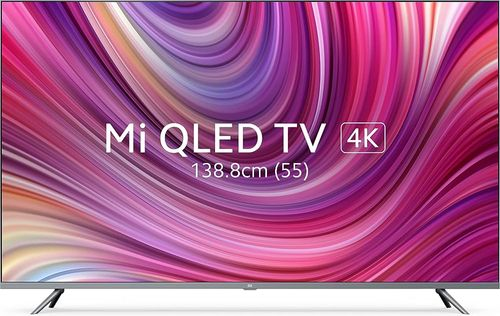
- Smart TVs: Smart TVs have revolutionized the way we consume content by integrating streaming services, apps, and internet connectivity directly into the television. These TVs offer a seamless entertainment experience, allowing users to access a vast library of on-demand movies, TV shows, and live broadcasts with the touch of a button. With built-in Wi-Fi and intuitive user interfaces, smart TVs provide endless entertainment options for the whole family, from streaming the latest Netflix series to browsing the web and playing interactive games.
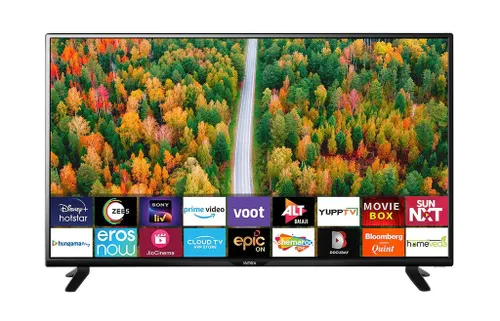
-
4K and 8K TVs: With the advent of Ultra High Definition (UHD) resolutions, 4K and 8K TVs have become increasingly popular among consumers seeking superior picture quality and clarity. 4K TVs offer four times the resolution of Full HD, resulting in razor-sharp images and lifelike visuals that bring movies and games to life. Meanwhile, 8K TVs take it a step further with four times the resolution of 4K, delivering unprecedented levels of detail and realism. Whether you're watching sports in 4K or experiencing the latest blockbuster in 8K, these TVs provide an immersive viewing experience that's second to none.4K and 8K are comparatively more expensive than LED TV's
-
Curved TVs: Curved TVs offer a unique viewing experience by wrapping the screen around the viewer, creating a more immersive and cinematic feel. These TVs mimic the curvature of the human eye, enhancing depth perception and reducing image distortion for a more engaging viewing experience. While curved TVs may not be suitable for every environment, they excel in areas such as gaming and home theater setups, where immersion is key. Whether you're watching a movie or playing a game, curved TVs draw you into the action for an unforgettable entertainment experience.
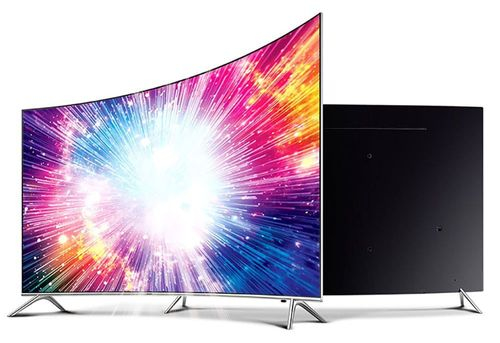
Each type of TV offers its own set of features, benefits, and unique selling points. Whether you prioritize picture quality, design aesthetics, or smart features, there's a perfect television out there to suit your preferences and elevate your entertainment experience to new heights. So, take your time to explore the options, compare the features, and choose the TV that's tailored to your viewing needs.
Screen Size:
When it comes to choosing the right screen size for your TV, it's essential to consider factors such as viewing distance, room layout, and personal preference. Let's explore the different screen sizes available and how they cater to various needs:
-
Small Screen Sizes (32-43 inches):
- Ideal for small rooms, kitchens, or bedrooms where space is limited.
- Perfect for casual viewing, such as watching the news or streaming content while cooking.
- Provides a budget-friendly option for those with limited space or budget constraints.
- Offers versatility in placement options, such as mounting on a wall or placing on a countertop.
-
Medium Screen Sizes (43-55 inches):
- Strikes a balance between size and affordability, making it suitable for living rooms, dens, or medium-sized bedrooms.
- Offers an immersive viewing experience for movies, sports, and gaming without overwhelming smaller spaces.
- Provides adequate screen real estate for enjoying content with family and friends.
- Offers a wide range of features and technologies, including 4K resolution and smart TV capabilities, at a reasonable price point.
-
Large Screen Sizes (55-75 inches):
- Perfect for larger living rooms, home theaters, or dedicated entertainment spaces where viewers sit farther away from the screen.
- Provides an immersive cinematic experience for watching movies, sports events, and gaming with lifelike detail and clarity.
- Offers expansive screen real estate for multitasking, such as split-screen viewing or browsing the web while watching TV.
- Showcases advanced features such as HDR support, high refresh rates, and wide color gamut for an unparalleled viewing experience.
-
Extra-Large Screen Sizes (75 inches and above):
- Designed for dedicated home theaters or spacious living areas where viewers require a truly cinematic experience.
- Offers an immersive viewing experience for large gatherings, movie nights, or watching sports events with friends and family.
- Provides exceptional picture quality and detail even at a distance, thanks to advanced display technologies and high resolutions.
- Showcases premium features such as OLED panels, Dolby Vision, and immersive audio systems for a true home theater experience.

Choosing the right screen size ultimately depends on your viewing habits, room size, and budget. It's essential to strike a balance between screen size and viewing distance to ensure an optimal viewing experience. Whether you prefer a compact TV for a cozy bedroom or a massive screen for a home theater setup, there's a perfect size out there to suit your needs. So, measure your space, consider your viewing preferences, and select the screen size that enhances your entertainment experience.
Screen Resolution:
When it comes to choosing the resolution for your TV, it's essential to consider your viewing habits, the content you'll be watching, and your budget. Let's delve into the various resolutions available and how they cater to different needs:
-
HD (720p):
- Ideal for smaller screens (typically up to 32 inches) or budget-friendly options.
- Provides a basic level of picture quality suitable for casual viewing, such as watching broadcast TV or DVDs.
- Offers a cost-effective solution for secondary TVs in bedrooms, kitchens, or kids' rooms.
- May lack the detail and clarity of higher resolutions but still delivers an enjoyable viewing experience for everyday content.
-
Full HD (1080p):
- Suitable for medium-sized screens (ranging from 32 to 55 inches) and mainstream viewing.
- Offers significantly improved picture quality and detail compared to HD, making it ideal for watching Blu-ray discs, streaming HD content, and gaming.
- Provides a balance between affordability and picture quality, making it a popular choice for most consumers.
- Offers sharper images and more vibrant colors, enhancing the viewing experience for movies, sports, and TV shows.
-
4K Ultra HD (2160p):
- Offers four times the resolution of Full HD, delivering unparalleled detail and clarity on large screens (55 inches and above).
- Ideal for viewing native 4K content, such as streaming services like Netflix, Amazon Prime Video, and Disney+, as well as 4K Blu-ray discs.
- Provides a more immersive and lifelike viewing experience with enhanced color reproduction, contrast, and sharpness.
- Enables closer viewing distances without visible pixelation, allowing viewers to appreciate fine details in the picture.
-
8K Ultra HD (4320p):
- The latest and highest resolution available, offering four times the pixels of 4K Ultra HD.
- Designed for ultra-large screens (typically 75 inches and above) and professional applications, such as digital signage and content creation.
- Provides an unprecedented level of detail and realism, making it ideal for viewing high-resolution images, videos, and immersive experiences.
- While 8K content is still limited, these TVs often feature advanced upscaling technology to enhance the quality of lower-resolution content.
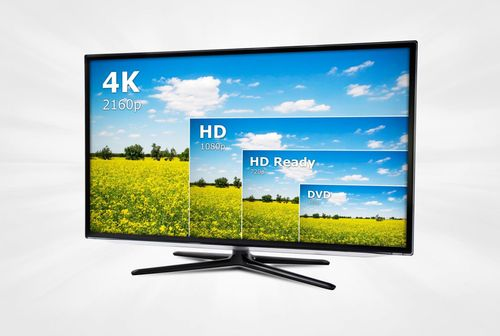
Choosing the right resolution depends on your budget, viewing preferences, and the availability of compatible content. While 4K Ultra HD offers a significant leap in picture quality and is becoming increasingly affordable, Full HD may suffice for smaller screens or casual viewing. For those seeking the ultimate viewing experience and have the budget for it, 8K Ultra HD provides unparalleled detail and clarity for the most discerning viewers. Ultimately, consider your needs and priorities to select the resolution that best suits your entertainment setup.
Display Technology :
When it comes to display technology, LED, OLED, and QLED are the leading contenders in the market, each offering unique advantages and considerations. Let's delve into the details of each technology:
-
LED (Light Emitting Diode):
-
Pros:
- Widely available and affordable, making it accessible to a broad range of consumers.
- Offers excellent brightness levels, making it suitable for well-lit rooms or daytime viewing.
- Energy-efficient compared to traditional LCD TVs, resulting in lower power consumption and longer lifespan.
- Provides uniform brightness across the screen, minimizing the risk of image distortion or uneven lighting.
-
Cons:
- Limited contrast ratio compared to OLED and QLED, which can affect the depth and richness of black levels.
- Relatively inferior viewing angles, with colors and contrast appearing less accurate when viewed from the side.
- May suffer from backlight bleeding or halo effect in dark scenes, impacting overall picture quality.
- Limited color gamut and saturation, resulting in less vibrant and lifelike colors compared to OLED and QLED.
-
-
OLED (Organic Light Emitting Diode):
-
Pros:
- Offers unparalleled contrast ratio and black levels, thanks to individual pixel illumination and the absence of a backlight.
- Delivers superior color accuracy, saturation, and vibrancy, resulting in breathtaking image quality and lifelike visuals.
- Provides wider viewing angles with consistent picture quality from any angle, making it ideal for group viewing or large living rooms.
- Enables ultra-thin designs and flexible form factors, allowing for sleek and modern TV designs.
-
Cons:
- Generally more expensive than LED and QLED TVs, making it less accessible to budget-conscious consumers.
- Susceptible to burn-in or image retention, especially with static images displayed for prolonged periods.
- Limited peak brightness compared to LED and QLED, which may affect HDR performance in brightly lit rooms.
- May exhibit color shift or degradation over time, although modern OLED panels have made significant improvements in longevity.
-
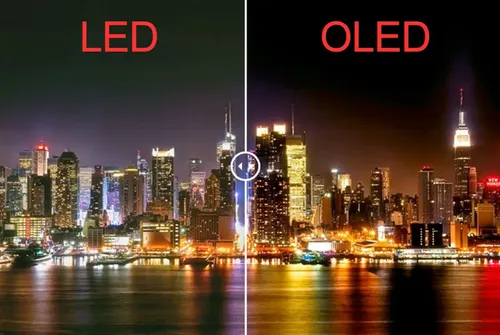
- QLED (Quantum Dot Light Emitting Diode):
-
Pros:
- Combines LED backlighting with quantum dot technology to enhance color accuracy, brightness, and HDR performance.
- Offers excellent peak brightness levels, making it well-suited for HDR content and vibrant, punchy colors.
- Provides wider color gamut and improved color volume compared to traditional LED TVs, resulting in more lifelike and dynamic visuals.
- Minimizes the risk of burn-in or image retention associated with OLED displays, ensuring long-term durability and reliability.
-
Cons:
- Generally more expensive than standard LED TVs, although more affordable than OLED counterparts.
- May still suffer from limited viewing angles compared to OLED, with colors and contrast diminishing when viewed from the side.
- Requires a high-quality source material to fully leverage its capabilities, such as native 4K HDR content or compatible streaming services.
- While offering excellent picture quality, some users may find OLED's infinite contrast ratio and true black levels more appealing for critical viewing scenarios.
-
In summary, LED, OLED, and QLED each offer distinct advantages and considerations in terms of picture quality, contrast ratio, and viewing angles. LED TVs provide affordability and energy efficiency, while OLED excels in contrast ratio and color accuracy. QLED strikes a balance between the two, offering enhanced brightness and color performance without the risk of burn-in. Ultimately, the choice between these technologies depends on your budget, viewing environment, and personal preferences for picture quality and performance.
Smart Features:
Smart TV features have revolutionized the way we consume content, offering convenience, connectivity, and customization options like never before. Here's a detailed look at some of the key smart features and their significance:
-
Built-in Streaming Apps:
- Smart TVs come equipped with pre-installed streaming apps like Netflix, Amazon Prime Video, Hulu, and Disney+, allowing users to access a vast library of movies, TV shows, and original content without the need for external devices.
- These apps provide on-demand access to a wide range of entertainment options, catering to diverse tastes and preferences.
- The availability of built-in streaming apps eliminates the hassle of connecting additional devices and simplifies the viewing experience for users.
-
Voice Control:
- Many smart TVs feature voice control capabilities, allowing users to interact with their TV using voice commands.
- Voice control enables hands-free operation, making it convenient to search for content, adjust settings, and navigate menus.
- By simply speaking into the remote control or a compatible smart speaker, users can access content, control playback, and even perform tasks like setting reminders or checking the weather.
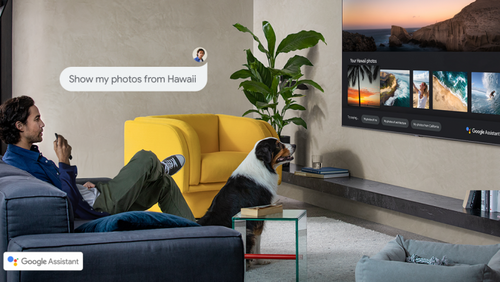
- Screen Mirroring:
- Smart TVs support screen mirroring or casting functionality, enabling users to mirror the screen of their smartphone, tablet, or laptop onto the TV.
- This feature facilitates easy sharing of photos, videos, presentations, and other content from mobile devices onto the big screen.
- Screen mirroring enhances collaboration, gaming, and multimedia experiences, allowing users to enjoy content with friends and family in a larger format.

- Compatibility with Smart Home Devices:
- Smart TVs often integrate with other smart home devices and ecosystems, allowing for seamless connectivity and control.
- Users can sync their smart TV with voice assistants like Amazon Alexa or Google Assistant, enabling voice commands to control not only the TV but also other connected devices such as lights, thermostats, and security cameras.
- Integration with smart home devices enhances convenience and automation, creating a more connected and streamlined living environment.

- User-Friendly Interfaces and Software Updates:
- User-friendly interfaces ensure intuitive navigation and ease of use, allowing users to access features and settings without confusion or frustration.
- Regular software updates are crucial for maintaining the security, performance, and functionality of smart TVs.
- Updates often introduce new features, improvements, and bug fixes, ensuring that the TV remains up-to-date with the latest technology and content trends.
Smart TV features enhance the entertainment experience by providing access to a wide range of content, hands-free control options, seamless connectivity with other devices, and user-friendly interfaces. Regular software updates ensure that the TV remains secure, efficient, and equipped with the latest features, making it a valuable investment for modern households.
HDR Support:
High Dynamic Range (HDR) technology is a game-changer in the realm of television, offering viewers an unparalleled visual experience with enhanced color depth, contrast, and brightness. Let's delve into the significance of HDR support and explore the different HDR formats:
-
High Dynamic Range (HDR) Technology:
- HDR technology expands the range of colors and brightness levels that a TV can display, resulting in more lifelike and dynamic images.
- By increasing the contrast between the darkest blacks and the brightest whites, HDR creates images with greater depth and realism, enhancing the overall viewing experience.
- HDR content preserves details in both the shadows and highlights, ensuring that every scene is displayed with remarkable clarity and precision.
-
Importance of HDR Support:
- HDR support is essential for reproducing the full spectrum of colors and luminance levels captured by HDR-enabled content, whether it's streaming services, Blu-ray discs, or gaming consoles.
- With HDR support, viewers can enjoy richer colors, deeper blacks, and brighter highlights, resulting in more immersive and true-to-life visuals.
- HDR enhances the fidelity and realism of images, making them more captivating and engaging, whether you're watching movies, playing video games, or viewing photos.
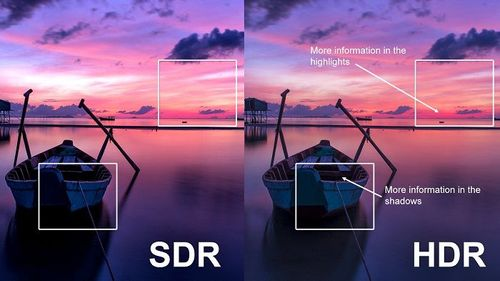
-
Different HDR Formats:
- HDR10: HDR10 is the most widely adopted HDR format, offering a baseline standard for HDR content. It supports 10-bit color depth and the Rec. 2020 color space, delivering vibrant colors and increased dynamic range.
- Dolby Vision: Dolby Vision is an advanced HDR format developed by Dolby Laboratories, known for its superior image quality and dynamic metadata. Dolby Vision content is mastered frame by frame, allowing for optimized HDR performance on a scene-by-scene basis.
- HLG (Hybrid Log-Gamma): HLG is a broadcast-friendly HDR format developed collaboratively by the BBC and NHK. It is designed to deliver HDR content over broadcast networks without requiring metadata, making it compatible with both HDR and SDR (Standard Dynamic Range) displays.
-
Benefits of Different HDR Formats:
- HDR10 offers broad compatibility and is supported by a wide range of devices and content providers.
- Dolby Vision provides enhanced image quality and dynamic metadata for a more refined HDR experience, particularly in premium content.
- HLG is ideal for broadcast and live streaming applications, ensuring compatibility with existing infrastructure and minimizing the need for additional metadata.
HDR support is crucial for unlocking the full potential of HDR content, delivering vibrant colors, deeper blacks, and brighter highlights for a truly immersive viewing experience. Understanding the different HDR formats, such as HDR10, Dolby Vision, and HLG, allows consumers to choose a TV that best suits their preferences and viewing habits.
Refresh Rate and Motion Handling:
When it comes to enjoying fast-paced action scenes, gaming, or sports events on your TV, understanding refresh rate and motion handling capabilities is crucial for ensuring a smooth and immersive viewing experience. Let's dive into these concepts:
- Refresh Rate:
- The refresh rate of a TV refers to the number of times per second the screen updates or refreshes its image. It is measured in Hertz (Hz), with higher numbers indicating a more frequent refresh cycle.
- A higher refresh rate results in smoother motion and reduced motion blur, especially during fast-paced scenes with rapid movement.
- The standard refresh rate for most TVs is 60Hz, meaning the screen refreshes 60 times per second. However, many modern TVs offer higher refresh rates, such as 120Hz, 240Hz, or even higher for premium models.
- Higher refresh rates are particularly beneficial for gaming, where fluid motion and responsiveness are essential for an optimal gaming experience.
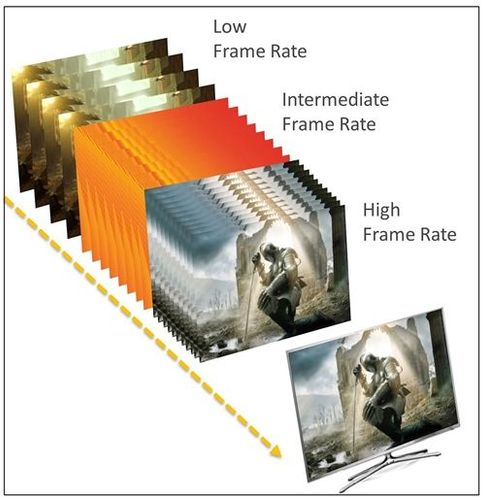
-
Motion Handling:
- Motion handling refers to how effectively a TV handles fast-moving objects and motion blur, ensuring that images remain clear and smooth, even during rapid on-screen action.
- Factors that contribute to good motion handling include the TV's response time, pixel transition time, and the effectiveness of motion interpolation technologies.
- Motion interpolation technologies, such as motion smoothing or motion blur reduction algorithms, work by inserting additional frames between existing frames to create smoother motion.
- While motion interpolation can reduce motion blur, it may also introduce artifacts or a "soap opera effect," where the image appears overly smooth and artificial. Therefore, it's essential to adjust these settings to your preference.
-
Significance for Gaming:
- In gaming, a higher refresh rate and superior motion handling capabilities are paramount for delivering responsive gameplay and minimizing input lag.
- High refresh rates, such as 120Hz or 240Hz, provide smoother motion and reduced motion blur, giving gamers a competitive edge and a more immersive gaming experience.
- Additionally, features like variable refresh rate (VRR) and technologies like NVIDIA G-SYNC or AMD FreeSync help synchronize the refresh rate of the TV with the frame rate output of the gaming console or PC, eliminating screen tearing and stuttering.
Understanding refresh rate and motion handling capabilities is essential for selecting a TV that can deliver smooth and fluid motion, whether you're watching action-packed movies, sports events, or playing fast-paced video games. By choosing a TV with a higher refresh rate and advanced motion handling technologies, you can enjoy a more immersive and enjoyable viewing experience with minimal motion blur and artifacts.
Audio Quality:
Let's delve into the realm of audio quality and its crucial role in enhancing the overall viewing experience:
-
Built-in Speaker Systems:
- Many modern TVs come equipped with built-in speaker systems that provide audio playback directly from the television itself.
- While built-in speakers vary in quality depending on the TV model, they generally offer basic audio output for everyday viewing.
- Built-in speaker systems typically consist of stereo speakers, positioned either at the bottom or sides of the TV, and they can deliver decent sound for casual viewing in small to medium-sized rooms.
- However, for a more immersive and high-fidelity audio experience, external audio solutions such as soundbars, home theater systems, or dedicated speakers are often recommended.
-
Audio Technologies:
- Advanced audio technologies like Dolby Atmos and DTS:X have revolutionized home audio by providing immersive, multidimensional soundscapes that enhance the viewing experience.
- Dolby Atmos, in particular, creates a three-dimensional audio environment where sound objects can move freely around the listener, including overhead, for a more realistic and immersive audio experience.
- Similarly, DTS:X also offers object-based audio technology, allowing sound to be placed and moved anywhere in the listening space, providing lifelike audio immersion.
- TVs that support Dolby Atmos and DTS:X decoding can deliver enhanced audio experiences when paired with compatible audio systems, such as soundbars or AV receivers.
- These audio technologies add depth, clarity, and spatial dimension to the sound, enriching the viewing experience by creating a more immersive and cinematic atmosphere.
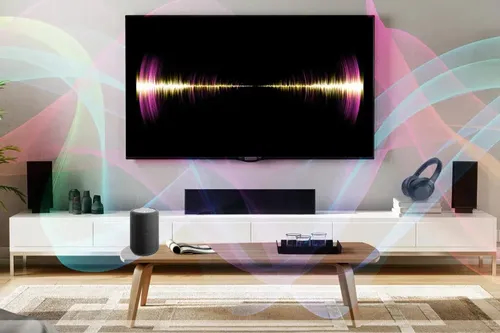
- Importance of Immersive Sound:
- Immersive sound is an integral part of the viewing experience, as it adds another layer of realism and engagement to movies, TV shows, and games.
- High-quality audio enhances emotional impact, immerses viewers deeper into the storyline, and creates a more memorable and enjoyable entertainment experience.
- Whether it's the thunderous roar of an explosion, the subtle rustle of leaves in a quiet forest, or the soaring crescendo of a musical score, immersive sound elevates every moment and transports viewers into the heart of the action.
- For cinephiles, gamers, and audiophiles alike, investing in a TV with superior audio capabilities and compatible audio technologies ensures a complete and immersive viewing experience that engages all the senses.
Audio quality plays a vital role in complementing the visual experience and creating a truly immersive and captivating entertainment environment. Whether it's through built-in speaker systems or advanced audio technologies like Dolby Atmos and DTS:X, achieving high-quality sound enhances the overall enjoyment of movies, TV shows, and games, making every viewing experience more immersive, engaging, and memorable.
Connectivity
Let's delve into the realm of connectivity and explore the various options available to ensure seamless integration and content streaming:
- HDMI (High-Definition Multimedia Interface):
- HDMI ports are essential for connecting external devices such as Blu-ray players, gaming consoles, soundbars, and streaming devices to your TV.
- HDMI cables transmit high-definition audio and video signals from the source device to the TV, ensuring crystal-clear picture quality and immersive sound.
- Most modern TVs come equipped with multiple HDMI ports, allowing users to connect multiple devices simultaneously without the need for frequent cable swapping.
- HDMI ports also support advanced features like ARC (Audio Return Channel) and CEC (Consumer Electronics Control), enabling streamlined audio playback and device control through a single HDMI connection.

-
USB (Universal Serial Bus):
- USB ports on TVs serve multiple purposes, including connecting external storage devices, such as USB flash drives and hard drives, to playback multimedia content directly on the TV.
- USB ports can also power certain devices like streaming sticks or provide a convenient charging option for smartphones and other gadgets.
- Additionally, some TVs support USB recording functionality, allowing users to record live TV programs onto a connected USB storage device for later viewing.
-
Ethernet and Wi-Fi:
- Ethernet ports provide a wired internet connection to the TV, offering a stable and reliable network connection for streaming high-bandwidth content like 4K HDR videos and online gaming.
- Wi-Fi connectivity enables wireless internet access, allowing users to connect their TVs to home Wi-Fi networks for streaming content from online services like Netflix, Hulu, and YouTube.
- Most smart TVs come equipped with built-in Wi-Fi capabilities, offering seamless connectivity to home networks and the internet without the need for additional accessories or cables.
-
Other Connectivity Options:
- Additional connectivity options may include components like optical audio ports for connecting soundbars or AV receivers, composite and component inputs for older devices, and headphone jacks for private listening.
- Some TVs also feature Bluetooth connectivity, allowing users to wirelessly stream audio from their smartphones, tablets, or laptops to the TV or pair Bluetooth-enabled headphones for personal viewing.
Connectivity options such as HDMI, USB, Ethernet, and Wi-Fi play a crucial role in expanding the functionality of your TV and enhancing the viewing experience. Whether it's connecting external devices, streaming content from online services, or accessing multimedia files from USB storage, having a versatile range of connectivity options ensures convenience, flexibility, and seamless integration with your home entertainment setup.
Gaming Features:
Let's dive into the exciting world of gaming features and explore how they enhance the gaming experience on your TV:
- Low Input Lag:
- Input lag refers to the delay between pressing a button on your controller and seeing the corresponding action on the screen.
- TVs with low input lag offer faster response times, resulting in more responsive and immersive gaming experiences.
- Gamers often prioritize TVs with low input lag to maintain precision and accuracy, especially in fast-paced games where split-second reactions are crucial.

-
Variable Refresh Rate (VRR):
- Variable refresh rate technology synchronizes the refresh rate of the TV's display with the frame rate outputted by the gaming console or PC.
- VRR reduces screen tearing and stuttering, resulting in smoother gameplay and improved visual fidelity.
- This feature is particularly beneficial for gamers who play graphically demanding games or engage in competitive multiplayer gaming where smooth and fluid gameplay is essential.
-
Support for Gaming Consoles:
- TVs that support popular gaming consoles like PlayStation and Xbox ensure compatibility and seamless integration with gaming hardware.
- Features like HDMI 2.1 connectivity and support for gaming-specific technologies (e.g., AMD FreeSync, NVIDIA G-SYNC) enhance compatibility and performance when connecting gaming consoles to the TV.
- Dedicated gaming modes and presets optimize picture settings for gaming, reducing input lag and enhancing visual clarity during gameplay.
-
Auto Low Latency Mode (ALLM):
- Auto Low Latency Mode automatically switches the TV to a low-latency mode when it detects a connected gaming console or device.
- This feature ensures minimal input lag and optimal performance for gaming without the need for manual adjustments to the TV settings.
-
Game-specific Picture Modes:
- Some TVs offer dedicated picture modes designed specifically for gaming, allowing users to customize settings such as brightness, contrast, and color saturation to suit different gaming environments and preferences.
- Game mode presets often prioritize performance and responsiveness, delivering a smoother and more immersive gaming experience.
Gaming features such as low input lag, variable refresh rate, support for gaming consoles, and dedicated gaming modes are essential considerations for gamers looking to maximize their gaming experience on TV. By prioritizing TVs with these features, gamers can enjoy smoother gameplay, reduced input lag, and enhanced visual fidelity, ensuring an immersive gaming experience that rivals traditional gaming monitors.
Energy Efficiency :
Let's explore the importance of energy efficiency in TVs and how it contributes to both environmental sustainability and cost savings:
- Eco-Friendly Modes:
- Many modern TVs offer eco-friendly modes or settings that help reduce power consumption without compromising viewing experience.
- These modes adjust various parameters such as brightness, backlight intensity, and display settings to optimize energy efficiency while maintaining satisfactory picture quality.
- Eco-friendly modes are particularly useful for users who are conscious of their environmental footprint and wish to minimize energy usage without sacrificing the enjoyment of their TV.
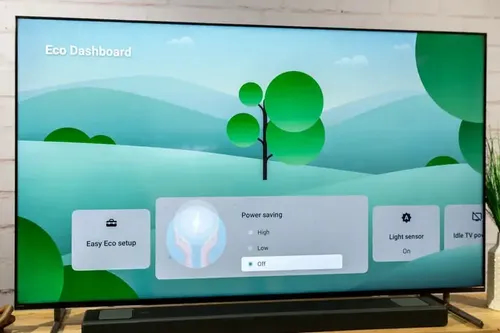
-
Automatic Power-saving Features:
- Some TVs come equipped with automatic power-saving features that intelligently adjust power consumption based on usage patterns and ambient lighting conditions.
- These features may include automatic brightness adjustment based on ambient light sensors, automatic standby or sleep modes after periods of inactivity, and timers to switch off the TV during specific hours.
-
Long-Term Cost Savings:
- Investing in an energy-efficient TV can lead to significant long-term cost savings on electricity bills.
- While energy-efficient TVs may have a slightly higher upfront cost, the savings accrued over the lifespan of the TV can outweigh the initial investment.
- Energy-efficient TVs consume less power during operation, resulting in lower electricity bills and reduced environmental impact over time.
-
Environmental Benefits:
- By choosing an energy-efficient TV, consumers contribute to the reduction of greenhouse gas emissions and environmental pollution associated with energy production.
- Energy-efficient TVs help conserve natural resources and promote sustainability by minimizing the demand for electricity generated from fossil fuels.
Energy efficiency is a critical consideration when purchasing a TV, as it not only leads to cost savings but also promotes environmental sustainability. Energy Star ratings, eco-friendly modes, automatic power-saving features, and long-term cost savings are key factors to consider when selecting an energy-efficient TV that aligns with both your viewing preferences and environmental values.
Brand Reputation:
When purchasing a TV, considering the reputation of the brand and the quality of its customer support services is paramount. Here's why brand reputation and customer support matter:
-
Brand Reputation:
- Established TV brands with a solid reputation often signify reliability, quality, and trustworthiness.
- Brands like Samsung, LG, Sony, Panasonic, and TCL have built strong reputations over the years by consistently delivering high-quality products and innovative technologies.
- These brands invest heavily in research and development to stay ahead of the competition, resulting in TVs that offer superior performance, durability, and user satisfaction.
-
Warranty Coverage:
- Warranty coverage is an essential aspect of the purchasing decision, providing consumers with peace of mind against potential defects or malfunctions.
- Most reputable TV brands offer standard warranty coverage ranging from one to three years, depending on the model and region.
- It's essential to carefully review the warranty terms and conditions, including coverage for parts, labor, and service, as well as any exclusions or limitations.
-
Customer Support Services:
- A brand's commitment to customer support is crucial for resolving issues, addressing concerns, and providing assistance throughout the product's lifespan.
- Look for TV brands that offer responsive customer support channels, including toll-free hotlines, email support, live chat, and online forums.
- Brands with dedicated support teams and knowledgeable representatives can offer timely assistance and troubleshooting guidance, enhancing the overall customer experience.
-
User Reviews and Recommendations:
- User reviews and recommendations can provide valuable insights into the overall satisfaction level and reliability of a TV brand.
- Online platforms, review websites, and social media communities are excellent sources for gathering feedback and opinions from other consumers who have purchased and used the same TV models.
- Pay attention to both positive and negative reviews, as they can offer valuable perspectives on factors such as picture quality, reliability, durability, and customer service experiences.
-
Industry Awards and Recognitions:
- TV brands that receive industry awards and recognitions for their products demonstrate excellence and innovation in design, performance, and customer satisfaction.
- Awards such as the CES Innovation Awards, Red Dot Design Awards, and J.D. Power TV Satisfaction Surveys can serve as indicators of a brand's commitment to quality and customer-centric values.
Considering the reputation of TV brands, warranty coverage, and customer support services is essential for making an informed purchasing decision. By choosing reputable brands with strong customer support networks, consumers can enjoy peace of mind knowing that they are investing in reliable products backed by responsive and helpful support teams.
Budget Consideration:
When it comes to purchasing a TV, budget considerations play a crucial role in determining the best value within your price range. Here are some tips for budget-conscious buyers to make the most out of their investment:
-
Set a Realistic Budget:
- Begin by establishing a realistic budget based on your financial situation and desired features. Consider how much you're willing to spend without compromising on quality or essential features.
-
Prioritize Essential Features:
- Identify the features that matter most to you and prioritize them within your budget. Focus on essential aspects such as screen size, resolution, display technology, and smart features that align with your entertainment needs.
-
Compare Prices and Deals:
- Research and compare prices from various retailers, both online and offline, to find the best deals and discounts. Look out for seasonal sales, promotional offers, and bundle deals that can help you save money without sacrificing quality.
-
Consider Value Over Price:
- Instead of solely focusing on the lowest price, consider the overall value proposition offered by different TV models. Look for TVs that provide a good balance of performance, features, and durability relative to their price point.
-
Explore Mid-Range and Entry-Level Options:
- Don't overlook mid-range and entry-level TV models, as they often offer impressive features and performance at more affordable price points. Brands like TCL, Hisense, and Vizio are known for providing excellent value for money with their budget-friendly TVs.
-
Check Refurbished or Open-Box Deals:
- Consider purchasing refurbished or open-box TVs from reputable retailers or manufacturer-certified outlets. These products are typically restored to like-new condition and come with a warranty, offering significant savings compared to brand-new models.
-
Read Reviews and User Feedback:
- Take the time to read reviews and user feedback on different TV models within your budget range. Look for feedback on picture quality, sound performance, reliability, and overall user experience to make an informed decision.
-
Evaluate Long-Term Durability:
- While price is important, don't overlook the long-term durability and reliability of the TV. Choose reputable brands known for quality construction and reliability, even if it means spending a bit more upfront to avoid potential issues down the line.
-
Consider Future-Proofing:
- Look for TVs with features that offer future-proofing, such as HDMI 2.1 ports, support for the latest HDR formats, and upgradability options. Investing in a TV with advanced features can ensure compatibility with upcoming technologies and extend the lifespan of your purchase.
Protect Your TV with a Voltage Stabilizer
When deciding on a new television, consider not just its features and visual quality, but also its durability. Power surges or dips can produce voltage fluctuations, which can harm the internal components of the television. To safeguard your TV from these fluctuations, try utilizing a voltage stabilizer, which can help keep them from interfering with its functionality.
Using a reliable voltage stabilizer, such as V-Guard, you can maintain a consistent power supply for your TV, preventing it from any harm caused by voltage fluctuations. It functions as a shield, controlling and maintaining a consistent voltage level despite variations in the electrical system.
A voltage stabilizer not only protects your TV, but also enhances its performance by providing a consistent power source, which improves image quality, reduces audio distortions, and extends TV life.
Conclusion:
In conclusion, choosing the perfect TV involves careful consideration of various factors to ensure an exceptional entertainment experience. From screen size and resolution to display technology, smart features, audio quality, connectivity options, and gaming capabilities, each aspect plays a crucial role in enhancing your viewing pleasure.
When making your decision, prioritize your preferences, room layout, and budget constraints. Look for a TV that not only meets your immediate needs but also offers long-term durability and reliability. Consider reputable brands with strong customer support and warranty coverage to ensure peace of mind after purchase.
By following this comprehensive buying guide, you'll be equipped with the knowledge and insights needed to navigate the vast array of TV options available in the market. Whether you're a tech enthusiast seeking the latest innovations or a budget-conscious consumer looking for the best value, there's a perfect TV out there waiting to transform your living space into an immersive entertainment hub.
Follow Us:
Ad
Recent News

Poco M8 5G Confirmed to Launch in India on January 8: Check out the price and specification
30-Dec-2025 12:18 PM

Samsung Galaxy S26 Series Could Debut Advanced Satellite Calling With New Exynos 5410 Modem
30-Dec-2025 06:57 AM

Realme Narzo 90x 5G Goes on Sale in India Today
23-Dec-2025 06:59 AM

Samsung Unveils Exynos 2600, the World's First 2 nm Chipset
19-Dec-2025 06:30 AM

Google Unveils Gemini 3 Flash: Faster AI That Outshines Pro Model
18-Dec-2025 09:55 AM
Reviews & Guides
View All

Nothing Phone 3a Community Edition First Impressions: A Fresh Take on Budget Smartphones

Realme P4x 5G Review: Budget-Friendly Beast with Epic Battery Life

Sony BRAVIA 7 Mini LED K-65XR70 vs. Haier Mini LED H65M95EUX

Samsung QN90F (65QN90FAU) Review: The King of Bright-Room Viewing

Why doesn’t Apple reveal the iPhone battery in advertisements?

Donald Trump Watch Collection: Timeless Luxury on the Wrist

Best 5 Litre Water Heaters in India 2025: Top Latest Models for Quick Hot Water

Top 10 camera lenses you should Own in 2025
Ad
Latest Mobiles In India
Ad
Ad












